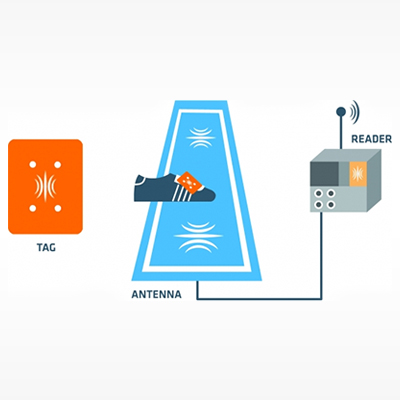Beyond Goals: 11 Ways Technology is Shaping the Football Field

Introduction
The integration of technology in football has ushered in a new era, revolutionizing the sport in multiple dimensions. From enhancing decision-making accuracy to providing fans with a more immersive experience, the impact of technology on the football field is profound and multifaceted. This article delves into the various ways technology has transformed the game, exploring its effects on fairness, data analysis, and fan engagement.
Impact of Technology on the Football Field
1. Enhancing Fairness and Precision: The impact of technology on the football field has brought about a significant impact by greatly improving the fairness and precision of matches. A prime illustration of this influence is the incorporation of Video Assistant Referee (VAR) technology. VAR allows referees to meticulously review critical decisions, such as offside rulings, instances of handball, and incidents of foul play, using video replays. This systematic approach minimizes the chances of human errors, resulting in more accurate and just determinations. With VAR in place, the game enjoys heightened fairness, reassuring teams that the outcome won't be unfairly swayed by mistaken judgments.
2. Data Analysis and Performance Tracking: The football field is now a hub of data collection and analysis. Wearable technology, GPS trackers, and sensors embedded in players' gear provide a wealth of information regarding their movements, distances covered, and physical exertion. This data is invaluable for coaches and analysts who can use it to tailor training programs, optimize player performance, and devise effective strategies. By leveraging data-driven insights, teams can identify strengths and weaknesses, adjust tactics, and enhance overall team performance.
3. Instant Communication and Tactical Adaptation: The integration of technology enables seamless real-time communication among coaches, players, and support staff throughout matches. Through wireless communication systems, coaches can provide immediate guidance, adaptations, and strategic shifts directly from the sidelines. This prompt exchange of information enhances team synchronization, flexibility, and on-field decision-making. The capability to swiftly make well-informed choices based on live analysis can ultimately determine the outcome, distinguishing between triumph and loss.
4. Fan Engagement and Immersive Experience: The impact of technology on football fields has transformed the way fans engage with football. Stadiums are equipped with giant screens that offer instant replays, multiple camera angles, and interactive content. Fans can immerse themselves in the game by analyzing crucial moments from various perspectives, enhancing their understanding of the game. Moreover, social media platforms, mobile apps, and virtual reality experiences bring fans closer to the action, allowing them to participate in discussions, access statistics, and feel more connected to their favorite teams and players.
5. Injury Prevention and Rehabilitation: Technological advancements have significantly contributed to player welfare. Wearable sensors and medical devices monitor players' physical conditions in real time, helping to identify potential injuries and prevent overexertion. Additionally, advanced medical imaging and treatment technologies aid in accurate diagnosis and efficient rehabilitation, enabling players to recover faster and return to the field stronger than before.
6. Virtual Ticketing and Streaming Services: Traditional ticketing systems are being augmented by virtual ticketing solutions. Fans can purchase virtual tickets to access live streams of matches from the comfort of their homes. This opens up revenue opportunities for clubs by reaching a global audience, including fans who might not be able to attend matches physically due to geographical constraints. Subscription-based streaming services also generate consistent revenue as fans pay for access to exclusive content, live matches, and on-demand replays.
7. E-Sports Collaborations and Gaming: The intersection of football and e-sports has created a lucrative avenue for revenue generation. Many football clubs have entered the e-sports realm by forming their own e-sports teams or partnering with established e-sports organizations. This collaboration not only diversifies revenue sources but also taps into the booming e-sports market, where fans engage in virtual football competitions and tournaments.
8. Enhanced Merchandise Offerings: Technology enhances the fan merchandise experience by incorporating interactive and personalized elements. Augmented reality (AR) apps allow fans to visualize how team merchandise would look on them before purchasing. Moreover, limited edition digital merchandise, such as in-game skins for e-sports characters, offers fans unique ways to support their favorite teams while generating revenue.
9. Digital Sponsorship and Advertising: Technological advancements enable targeted digital sponsorship and advertising campaigns. Clubs and leagues can leverage data analytics to tailor advertising content to specific fan demographics, maximizing the value of sponsorship deals. Interactive and engaging digital advertisements can command higher fees from advertisers looking to tap into the passionate football fan base.
10. Gaming Partnerships and In-Game Purchases: Collaborations with football-themed video games and mobile apps present revenue-generating opportunities. In-game purchases, such as virtual jerseys, equipment, or exclusive player content, can provide a steady flow of income. Cross-promotion between the gaming industry and football also expands brand visibility and revenue potential.
11. Data Monetization and Analytics Services: The data collected from various technological solutions, such as wearable devices and analytics platforms, can be valuable not only for improving team performance but also for selling insights to external parties. Clubs and leagues can offer data-driven insights to media, sponsors, and betting companies, creating revenue streams from data monetization.
Conclusion
The impact of technology on the football field is a testament to its ability to enhance the sport's fairness, analysis, and fan engagement. From VAR ensuring accurate decisions to data-driven insights optimizing player performance, and real-time communication improving strategic execution, technology has redefined football in numerous ways. As the sport continues to embrace innovation, it's essential to strike a balance between leveraging technology's benefits and preserving the essence and integrity of the beautiful game.





